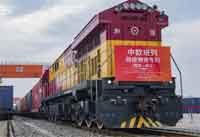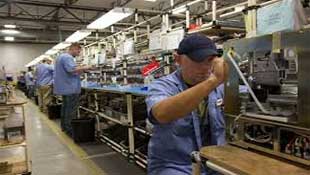| |
|
| |
|
 |
Supply
Chain by the Numbers |
| |
|
| |
- April 15, 2021
|
| |
|
| |
|
| |
|
| |
US Truck Driver Pay again Heading Higher; UPS Buying New Type of Delivey Drone; Cargo Trains from China to Europe Rising Rapidly; US Manufacturing Output Jumps Nicely in March |
| |
|
| |
| |
| |
| |
$60,000 |
|
That is now how much a new truck driver coming out of driver’s school can earn in his or her first year on the job at Knight-Swift Transportation, the largest truckload carrier in the US. The company recently said its pay for new certified drivers has increased 40% or more in recent months, as the US driver shortage is back big time after abating for parts of 2020. That $60,000 annual income is far above the median pay for heavy-truck drivers of just over $47,000, according to the US Bureau of Labor Statistics. Seventy five percent of truck carriers responding to survey by Wall Street firm Cowen & Co. in the first quarter of this year said they believe they will have to increase driver pay in 2021, compared with 50% in the same period in 2020. That figure would almost certainly be higher if the survey was issued again right now. Knight- Swift and other carriers are increasing wages, generally in terms of pay per mile driven, to both attract and retain drivers. Carrier Yellow Freight, in the LTL sector where turnover is a small fraction of that seen in the full truckload market, still is pulling out all the stops to attract drivers. Yellow hired nearly 2,000 drivers and terminal workers in Q1, and is conducting two dozen recruiting events between now and July. The company has 14 driving academies and plans to open more. Yellow is also holding pop-up schools for smaller groups at some freight terminals. “We need more drivers and we need them now,” Yellow CEO Darren Hawkins said.
|
|
|
| |
| |
|
|
 |
| That’s how many cargo trains per week will soon begin coming from China into the gritty port town of Duisburg, Germany. That would be up 40% from current levels after 70% growth in Chinese cargo trains there in 2020. This as the overall growth of cargo moving by rail from China to a sharply increasing number of European cities continues to rise. The number of freight trains operating between China and Europe topped 12,400 last year, 50% higher than in 2019 and seven times that of 2016, according to Chinese authorities and as reported by the Wall Street Journal. This not only gives European importers an alternative between ocean carriage and air cargo in terms of cost and speed – it builds support for China from areas benefitting from handling the increased cargo. This occuring as part of China’s Belt and Road initiative, in which it is attempting to use to further integrate itself with countries from Europe to Africa largely through logistics infrastructure development. |
| |
| |
|
|
| |
| |
2.8% |
 |
That was the growth in US manufacturing output in March versus February, according to the monthly data released this week by the Federal Reserve Bank. While that's a pretty good increase, but it has to be considered in context of weak February numbers related to bad winter weather in much of the country in the month. All told, however, that only took the index to a level of 102.8, meaning US manufacturing is only up 2.8% from the baseline year of 2012 (index = 100), now nine years later. The index is aso still a few percentage points below the 105 or so level seen right before the start of the pandemic in the US in March of 2020. |
| |
| |
| |
| |
| |
|
|
|
| |
 |
 |
| |
 |
![]() |
 |
|
| |
 |
Feedback |
|
|
|
![]()
|
No Feedback on this article yet.
|
|
![]() |
|
|
|
![]() |
 |
![]() |
 |
|
| |